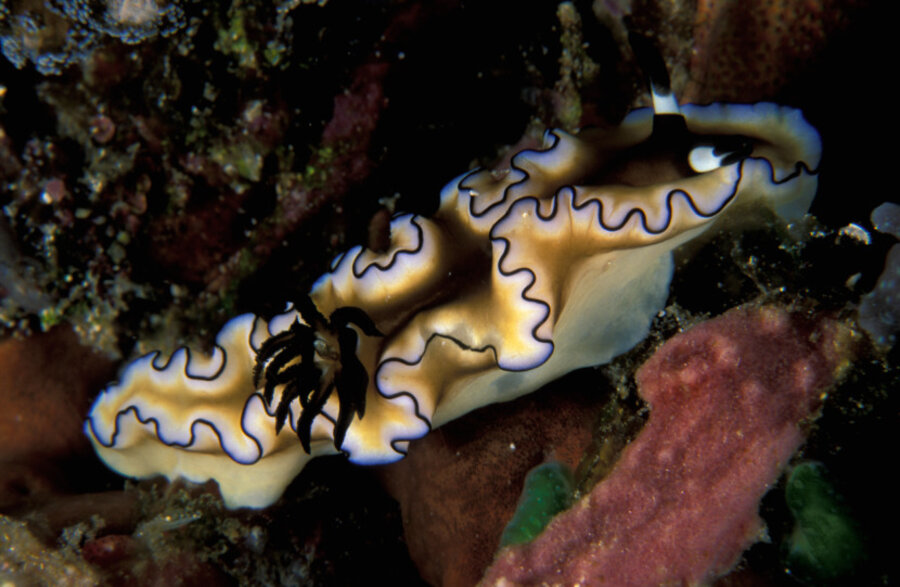Census of Marine Life may have missed one deep-sea encounter
Loading...
The oceans are easily seen yet so little known, like looking through a glass, darkly. That human ignorance of the watery depths, however, changed Monday with the release of a global survey of ocean species. More than 2,700 scientists plumbed the briny gardens of life for 10 years to bring us the sea world – without the sea.
The Census of Marine Life, as the three volumes and multiple maps are called, led to the discovery of thousands of new creatures, such as the yard-long tube worm that lives for 600 years or a giant squid with elbow-like tentacles.
This inventory of creatures in Earth’s largest habitat cost $650 million but it has yielded a rich knowledge of how life connects to other life – even at 9,000 feet below the surface.
My own connection to the deepest of the seas was in the Banda Islands, one of the most remote parts of Asia. A traveler must take multiple flights to arrive at these six tiny isles in eastern Indonesia. They are famously known as the original home of nutmeg, or the kind of spice that was once so prized and rare that it led European powers to fight for control of all spice sources in Asia.
This history is not without one pivotal moment for Americans. In 1667, after numerous sea battles, the English gave up possession of one of the Banda islands to the Dutch, who had long sought a monopoly over the nutmeg trade. It was quite a trade, in hindsight. In return, the British got Manhattan (then known as New Amsterdam.)
While I enjoyed eating one of Banda’s local delicacies – a large green-blue pigeon that eats nutmeg off the tree, thus infusing its meats with the flavor – what intrigued me most during my stay was the Banda Sea. It is one of the deepest parts of the ocean at over 22,000 feet.
My guide, a well-known local leader named Des Alwi, told me one reason why this sea means so much to him. He explained that the islands only got electricity in the 1980s and, as a boy, he and other children relied on a light source from the sea.
What? I asked, confounded. He said there are types of deep-water fish with lighted parts on their bodies that come up to the surface at night. Their biological luminescence is so bright that the school children could collect them and put them in a fish tank so they can do their homework during the short while that the fish survived.
No way! I responded. Yes, he said, and to show me, he took me out in the harbor on a small boat one evening. He then waved a flashlight across the surface, and sure enough, those deep-sea fish were there and responded by flashing their own lights. For a long moment, the harbor wasn’t dark.
This connection between humans and deep-diving creatures didn’t stop there. Des also told me how his people would wait each year for migrating baleen whales to pass near the islands. The whales were following schools of small fish to swallow them up. Once the whales were spotted, the women would walk as far as they could into the surf and lift up their long skirts, catching the fish as well. They would then waddle back to shore and cook up a feast.
I doubt if this kind of information was collected by the 2,700 scientists for their ocean survey. But here it is, on this blog, inspired by the marine census.
Life is probably much changed in Banda since my visit in the early 1990s. Japanese scuba divers have since discovered the rich coral reefs there – rich because of the nutrients that rise up from the deep sea.
I, too, was enriched at Banda, as I can say I witnessed the deepest of seas without actually going too deep.
(For more on Banda, I suggest a gem of a book, written by former US diplomat Willard A. Hanna, entitled Indonesia Banda: Colonialism and Its Aftermath in the Nutmeg Islands, published in 1978.)





